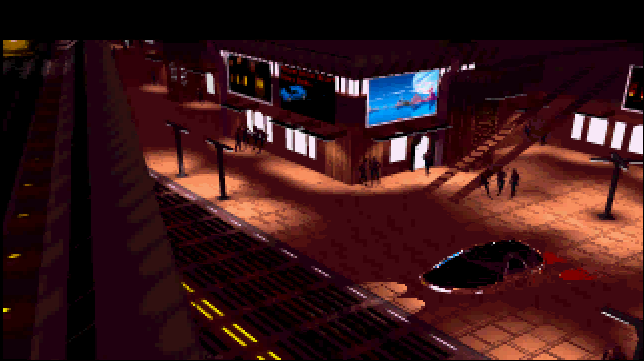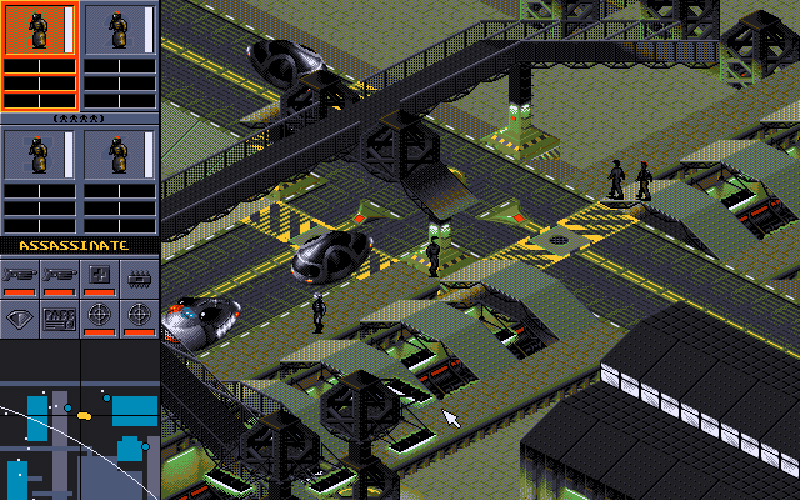Going Back: Syndicate
Considering I was going to be reviewing Satellite Reign, this was a no-brainer. But it’s also a no-brainer because it was, in its way, quite interesting. For all that people have compared SR to Syndicate (Released in 1993, by Bullfrog, who also gave us Populous and introduced us to Peter Molyneux), the two are very different experiences.
Both, for example, use four team members, who can, with the right equipment, do pretty much anything. They can be replaced. They can be upgraded. They’re facing off against other corporations. The world is grim and gritty. But here, the similarities end. Syndicate, you see, is strictly level based, as opposed to the sprawling open world of Satellite Reign. Skills don’t really exist, and your agents are easily replacable, not because they can be cloned, but because, to the corpsicles of Syndicate, grabbing a joe off the street, brainwashing them, and hooking them up to cybernetics is considered cheaper and more effective.
The goals, also, are similar, but in its way, Syndicate is broader in scope. Each mission is a step along the way to complete global domination, starting in Europe in the main game, then jacking up the difficulty with the additional “American Revolt” missions. And other things make the game easier as well. The Persuadatron, for example.
The Persuadatron was a wonderful device, although its usefulness declined in later missions. Effectively, you put it on, bumped into a civilian, and they were then yours. Get enough civilians converted, you could convert a police officer. Get enough officers converted, you could even convert enemy agents. Of course, that led to its own flaws, with one possible mission path being “Hoover up everyone on the map before going to the objective”… But it was only one possible mission path. Others would open up to you.
Stealth, for example, was do-able. Difficult, but do-able. Going loud, equally, was an option, and as the game progressed, you could move from destroying people (including the agents of enemy Corps) and civilian vehicles, to destroying entire buildings. Target you want to kill in a building? Right, gauss rifle and flamethrower time! But equally, equipping badly for a mission is a bad idea. Bringing a shotgun to deal with a scientist’s personal bodyguard? Well, that’d be fine, except you’re meant to Persuade the scientists, Agent, not Eliminate them. Access Cards could not only open doors, but convince police that you’re meant to be there (Although not, alas, guards.) And, of course, your agents have performance enhancing/reducing drugs and cyberware, which have various effects (Want to carry two miniguns? Improve your arm mods to hold them, and eye mods to shoot in a tighter pattern)
As an older game, the difficulty curve ramps up moderately quickly, and the final mission of the main game involves seven corps working with their kill teams against you in less than ideal conditions for your agents, but, even today, you can see little things that make this a classic. The AI isn’t terribly complicated, but it knew how to use its weapons, it gave the impression of a populated (Albeit not densely) city block, and for all that the mechanics, aesthetics, and music are relatively simple, they’re all geared toward the same experience. The experience of being dystopian enforcers of a terrible New World Order. Bullfrog would return to the theme with the expansion pack, American Revolt, in 1994, Syndicate Wars, in 1996, and, of course, Dungeon Keeper, in 1997.



